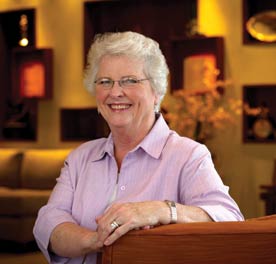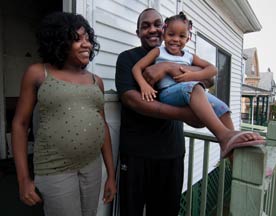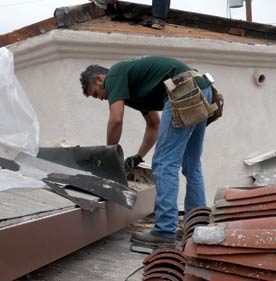By any definition, Mercy is a large organization working at a significant scale. Thinking about the mission to create stable, vibrant, healthy communities, what does scale mean in that context?
We’re going into the third year of a five-year strategic plan now. The whole push of that plan was to close the gap between the supply and the demand for affordable housing for lower income people. And depending on who you talk to, it’s huge. Could be, at least in our estimations, close to 10 million units that need to be created or preserved to close that gap.
We had six major strategic priorities directed at that, one of which was growth. We’ve been producing, over the last 10, 15 years, about 1,500 to 2,000 units a year of either new or acquired and rehabbed properties, or financing of other nonprofits to do the same work. And that’s not enough. We’ll not close that gap if we don’t get much, much more production in the pipeline. And we can’t do it all ourselves. All the nonprofits in this country can’t do it themselves. We need to find a way to combine the best of the nonprofit, government, and private sectors to come up with a production program that will really impact that gap.
It’s going to require a commitment from the current larger nonprofits to figure out a way to get to scale. Now, what is scale for us? Well, we set ourselves a huge growth goal. We said we were at about 38,000 units. We’re now a little over 40,000, and we wanted to get to 100,000 units in five years. So it would mean we’d have to produce or preserve or finance another 60,000 units.
Keep in mind that we started this in 2010, which was part of the downside in the real estate market, and the stuff that’s happened since has only put up more roadblocks and made it more difficult, but that doesn’t mean that we’re not going to do our very best to meet that goal.
We set that large goal for two reasons. First was to challenge ourselves internally, that we had to do better what we were doing, and we had to do more of it. And also, in my mind, to challenge the industry, both the nonprofit and the for-profit developers, to make a commitment to closing that gap in whatever way they could do it.
It certainly got the attention of our internal audience, and it’s gotten the attention of the external industry groups, too. And given all the givens since we committed to do this in beginning of 2010, are we going to make it in five years? Probably not. But I don’t think that means that we should stop trying, because the need is only getting greater every day with this foreclosure mess.
If you stop trying, then you are guaranteed to fail.
Exactly. And I think the nonprofit world really has to start thinking differently. We have been so reliant on Low Income Housing Tax Credits over the last 20 years, and they may or may not be here, if tax reform ever happens. So we’ve got to start thinking now about other ways to finance this stuff that’s more efficient than the tax credit. The tax credit takes us, if you’re lucky, five years from the time you start talking about doing something with a building or buying a piece of land to the time somebody moves in. If you’re lucky, five years.
That’s too long. The whole process is inefficient. We have to gather five, six, seven, eight different sources of financing on these deals, and they each have their cycles and their reporting requirements.
Now, the states like these tax credits because it gets the housing done and they can pass it around. But it’s certainly not as efficient as normal market-rate capital is.
You get a developer who finds a place, says I’m going to build a really nice project here. I’m going to put some equity in. I’m going to get an 80 percent loan to value loan on this. I’ll hold it for three to five years, and then I’ll sell it, take my money, and go do something else. The nonprofits come at it from who are we going to serve here, what rents can those people afford, and then you have to work backwards, what’s your net operating income and how much of a first mortgage can that support, and that’s usually only about 25, 30 percent of the total cost. So you get a conventional mortgage for that, and then you’ve got to fill in the other 75 percent with the tax credits or the soft dollars, HOME and CDBG, and it takes a long time.
Half a decade, you’re done.
Yes. I mean, it’s just crazy. We’ll never fill the gap if we continue to do what we’ve been doing the way we’ve been doing it.





After reading the entire interveiw of Sister Lillian Murphy; words seem inadequate to express my admiration for her.
Knowing her leadership ability and her geniune caring for those that lack the economic resources to access quality, safe housing opportunties and the ability to assess health care makes me proud to be staff at Mercy Housing.